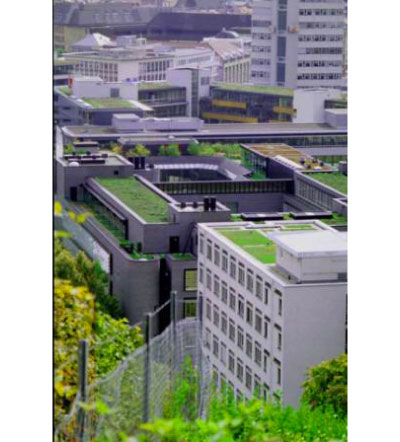People are designed to function within the natural landscape, and as our natural landscape further deteriorates, designers are using green-roof technology to re-define urban development as ecologically sustainable. Green roofs reinstate some of the landscape features that originally made life habitable on land, but were torn down to make way for skyscrapers and apartment buildings.
A green roof, or an engineered vegetative layer planted directly into the roof over concrete, tile, etc, comes in many forms, but in the end, each has the same effect: renewing the visual and environmental connection to ecological balance. Prominent in Europe and making headway in the US, green roofs re-introduce biological diversity into our cities, support architectural structure, and reduce the psychological stress and environmental impact of development.
The design challenge of green roof is to combine mechanics with aesthetics and create an urban geography that fulfils its visual appeal and environmental benefits all at once. All systems have their design advantage based on individual architecture, but the basic green roof forms are: extensive, which are self-regenerative, low maintenance, visual gardens; and intensive, which have more of a functional basis, heavier, with more vegetative capabilities. All green roofs consist of a multi-ply water-proofing layer, drainage, filter fabric, growing media, and plants.







 Facebook
Facebook Permalink
Permalink Digg
Digg Reddit
Reddit LinkedIn
LinkedIn StumbleUpon
StumbleUpon Tumblr
Tumblr
